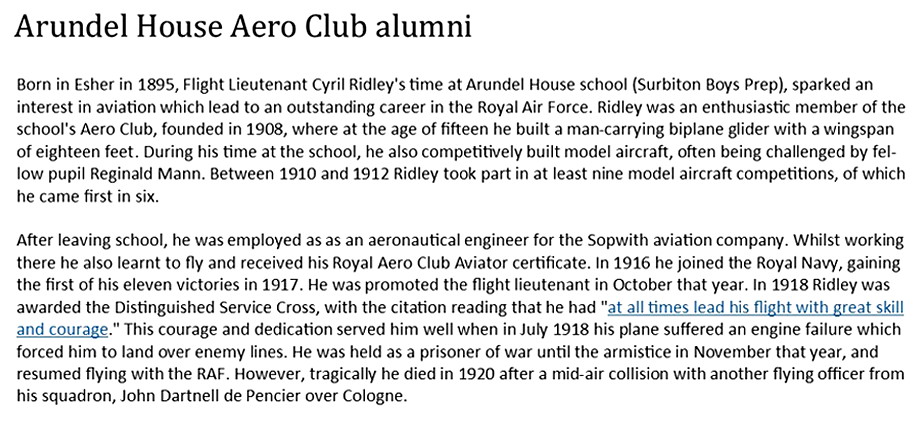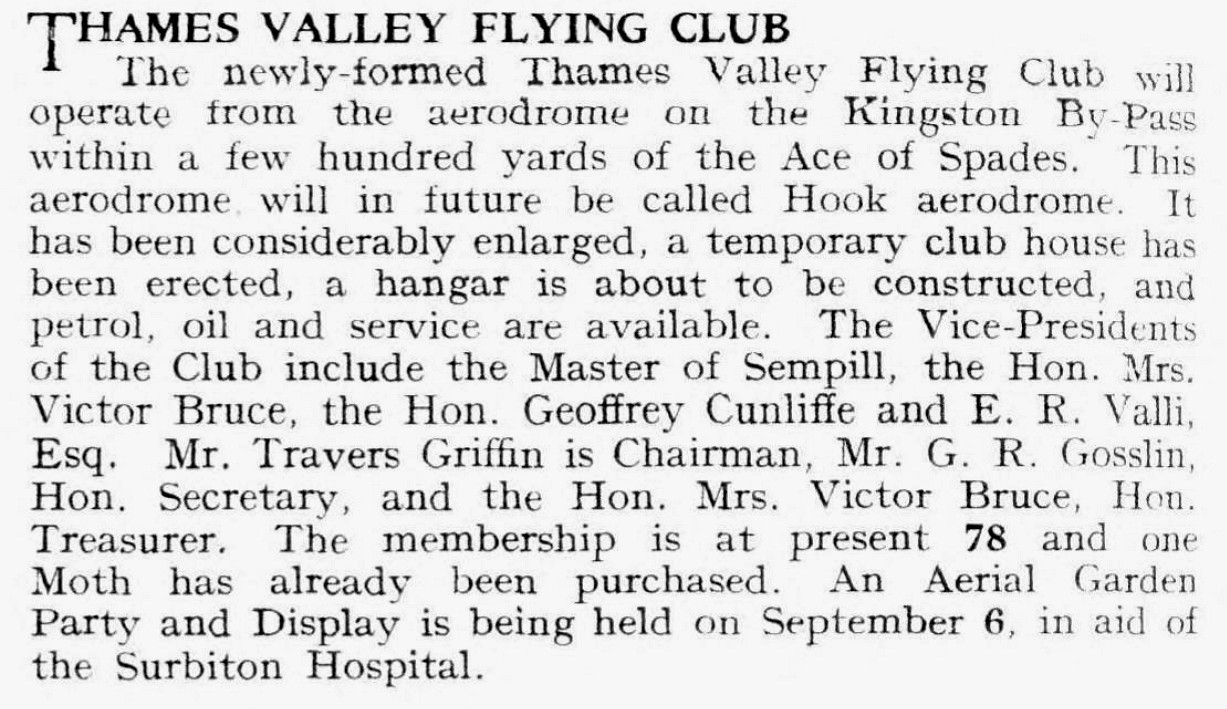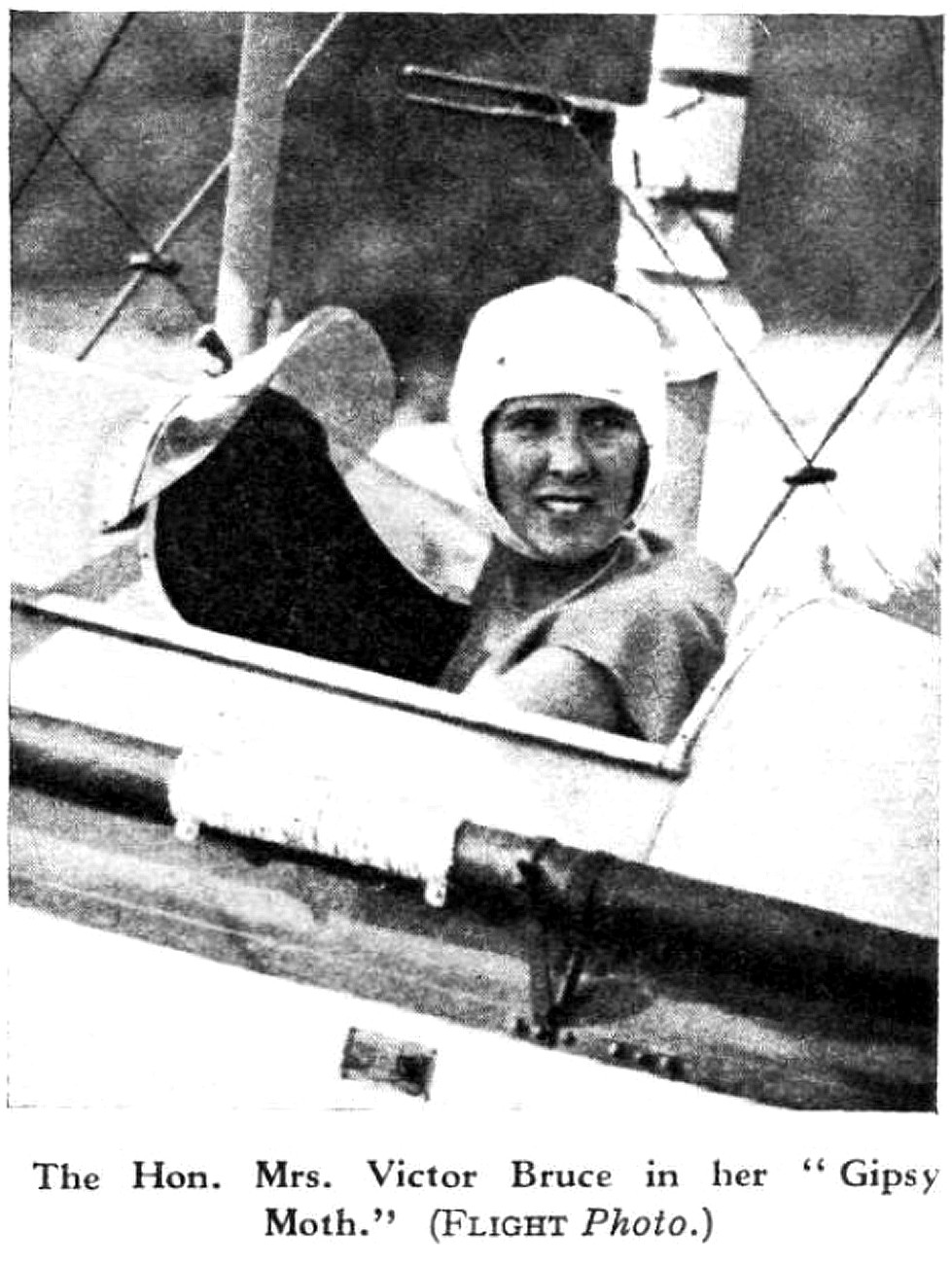Hook
HOOK: Civil aerodrome
(Also called the ACE of SPADES AERODROME: For which a seperate listing for cross-reference purposes is also included in this 'Guide'.)
Location: Long Ditton, S of A3, NW of Hook and about 2.5nm S of Kingston-upon-Thames town centre
Period of operation: Pre WW1 for model flying - then 1933 to 1937
THE FIRST BEGINNINGS
Most unusually, the first evidence found for flying at this location was for model flying by the Arundel House Aero Club, based at Arundel House School in nearby Arlington Road and formed in 1908. Model flying sites are an important part of this 'Guide' right up to the present day. Indeed, the development of the concept of fixed wing aeroplanes can be directly traced back to Sir George Caley who made his first experiments using models back at the very start of the 19th century. (See BROMPTON HALL for more information).
A MICHAEL T HOLDER GALLERY PART ONE
We have Mike Holder, a great friend of this 'Guide', to thank for the research into this location and providing us with the maps, press items and pictures. As can be seen below, the Arundel House Aero Club were making a big impact on model developments during 1911. We do not know if exactly the same field was used in 1911, but it does seem that if not, it was probably close by.
Article One was published in Flight magazine on the 22nd April 1911. The short articles, One, Two and Three were also published in Flight magazine, on the 3rd June, 29th July and 2nd September respectively.
The two excerpts were obtained from an article in Surbiton Community.
A MICHAEL T HOLDER GALLERY PART TWO
As far as can be ascertained to date (March 2024) there is no evidence of any flying taking place here since the model flying prior to WW1. The opening ceremony, hosted by the Thames Valley Flying Club, with an Aerial Garden Party on the 6th September 1933 certainly attracted a lot of attention. It was common practice in those days for an 'official' opening to be held some time after an aerodrome became operational.
The Short article One was published in Flight magazine on the 17th August 1933.
The Short article Two was published in The Bystander on the 6th September 1933. Short article Three was published in the Daily Mirror on the 7th September 1933. The photo, published in Flight magazine on the 14th September 1933, shows the Miles Satyr 'bombing' the 'Bucking Ford' tractor.
The photo and the three part article were published in Flight magazine on the 14th September 1933. The aircraft in the foreground of the photo is the de Havilland DH83 Fox Moth, G-ACGW, then registered to Mr Charles Lloyd from 24.05.33 and based at HESTON. It crashed on Jersey in the Channel Islands on the 1st October 1933.
THE DISPLAY BY SIR ALAN COBHAM'S NATIONAL AVIATION DAY No.1 TOUR (4th September 1935)
This article, in two parts, was published in the Daily News (London) on the 5th September 1935.
The local area and area views are from my Google Earth © derived database.
NOTES: Probable venue on the 16th April, (it would seem highly likely), for the British Hospitals Air Pageant 1933 Tour of the UK.
Venue (30th September 1933) for Sir Alan Cobham’s No.2 Tour of the UK.
Venue (4th September 1935) for Sir Alan Cobham’s 1935 No.1 Tour.
Venue (8th April 1936) for CWA Scott's Flying Displays UK Tour
AND LAST BUT VERY MUCH NOT LEAST
This photo of the Hon. Mrs Victor Bruce, was also published in Flight magazine on the 14th September 1933.
The 1920s and 30s saw several women, usually from wealthy backgrounds, taking on the men in aviation, and usually doing very well, breaking records and performing similar often very daring feats. It rather amused me to see this picture and the mention that she was the Hon. Treasurer of the Thames Valley Flying Club.
In fact she was a most extraordinary personality, and not just in flying including air racing, but also highly competitive in car racing, speed boat racing and, it seems, other sports too.
I can highly recommend looking up her life story.
We'd love to hear from you, so please scroll down to leave a comment!
Leave a comment ...
Copyright (c) UK Airfield Guide











































